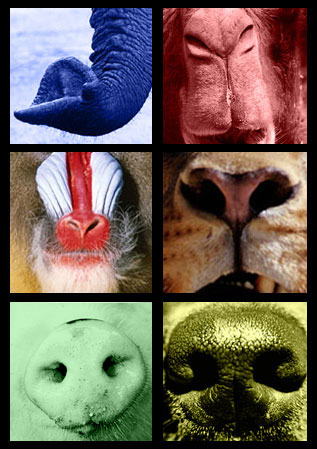
| Research | ||||||||
|
Sniffing Around Neural Pathways: Scientists Unearth Mechanisms of Smell |
||||||||
But scents actually follow an incredibly complex and circuitous path to the brain, where they are translated to perceptions and elicit responses, whether that means smiling because of the rose or recoiling from the aroma of trash. Researchers trying to better understand that process hope to improve knowledge of perception in the brain, as well as behavioral and instinctive responses. Identifying the neural pathways of those responses could one day help scientists create drug treatments for behavioral and emotional disorders. Dr. Linda Buck, a full member of the Fred Hutchinson Cancer Research Center and affiliate professor of physiology and biophysics at the UW, leads a group researching the physical responses to odors and pheromones. Buck won a Gairdner Award in 2003 for her work in cataloguing odorant receptors, which are responsible for detecting odorants in the nose, as well as clarifying how the brain receives signals from those receptors. "We're using molecular tools to gain insight into how chemical odorants are translated into perceptions in the brain," said Buck, who is also an investigator for the Howard Hughes Medical Institute. "Mechanisms that underlie perception are not understood very well." Buck's group is studying odorant receptors in lab mice, and has already charted the neural pathway followed by odors from the nose to the olfactory bulb, and from there to the olfactory cortex in the brain. They found that there are about 1,000 odorant receptors in the nose, each with about 5,000 dedicated neurons to help carry impulses on to the olfactory bulb. Much like a small number of letters in the alphabet can be combined to generate thousands of words, odorant receptors are grouped together to generate a "code" for a particular smell. That code is then transmitted to the olfactory bulb. Buck's group discovered that unlike in the nose, where neurons are scattered around the nose in no relation to their related odorant receptors, neurons in the olfactory bulb are highly organized in a pattern that's the same in different individuals. From there, the signals are sent to the brain's olfactory cortex, which has its own complicated map of odorant receptor inputs. In both the nose and the olfactory bulb, the neurons transmitting odor signals are dedicated to a particular odorant receptor. But Buck's group discovered that in the olfactory cortex, neurons receive signals from multiple odorant receptors. "That may be important because each odorant is recognized by different receptors," she explained. "The cortex could allow information from different receptors to come together in a single neuron. That could be an important step in generating different odor perceptions." The researchers are using genetic tracing methods, one of which they developed, to see how odors are represented in higher levels of the nervous system, beyond the olfactory cortex. They are also examining how odors and pheromones can yield emotional and behavioral responses, such as fear, to better understand the neural processes behind those responses. "We're trying to identify the neural circuits and neurons that control instinctive behaviors and emotional responses," said Buck. "By investigating the pathways stimulated by pheromones and odors that cause those responses, we hope to be able to identify the neurons that control those behaviors. Perhaps we can then identify molecules on those neurons that can be used as drug targets to treat emotional and behavioral disorders in humans." |
||||||||
|
© 2003 - 2004 UW Medicine
Maintained by UW Health Sciences and Medical Affairs News and Community Relations Send questions and comments to drrpt@u.washington.edu |
||||||||


